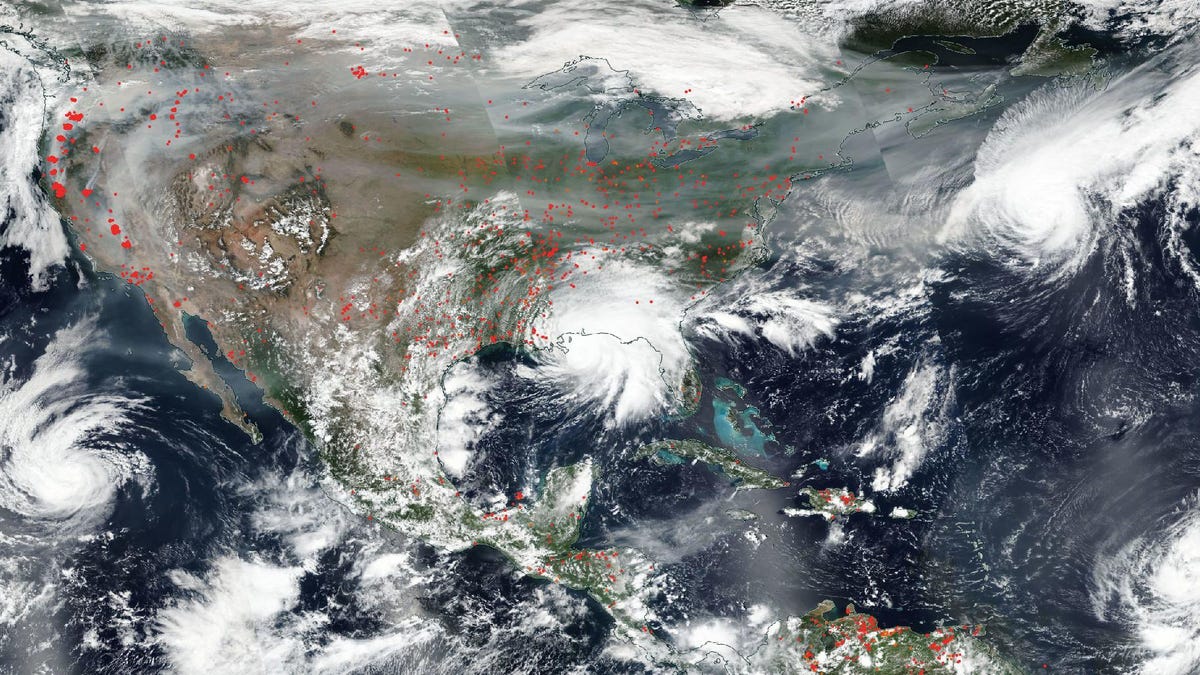NASA sees heartbreaking scope of US wildfires and storms in a single image
From California's ferocious fires to Hurricane Sally's heavy rains, a NASA satellite saw it all.

West Coast wildfires, three hurricanes and a tropical storm all appear in this one NASA Aqua satellite image from Sept. 15, 2020.
It can be hard to get a mental grasp on the devastation the 2020 wildfire and hurricane season has caused across the US. A single NASA image puts it all into sobering perspective.
On Wednesday, NASA released a view from its Aqua satellite taken on Sept. 15. It shows swirls of smoke, wildfire hotspots, hurricanes and a tropical storm. "Red points in the west note areas that are significantly higher in temperature than the areas around it and are indicative of fires," NASA said.
The massive wildfires across the western US have triggered evacuations and spread huge swathes of smoke across the country. Here's what we know about those fires, and how you can help.
From left to right are Tropical Storm Karina off the coast of Baja California, Hurricane Sally hitting the Gulf Coast and Hurricane Paulette near Bermuda. Hurricane Teddy sits in the lower right corner of the image.
There have been so many major storms this season that we are close to running out of regular names for them.
Hurricane Sally brought severe flooding to Florida and Alabama this week, and continues to dump huge amounts of rain.
NASA's view from space offers a somber summary for this summer of destruction. "Satellite images are generated every single day, in fact multiple times from multiple satellites, but it is still very unusual to capture an image of so many hazards in one image," said NASA.

